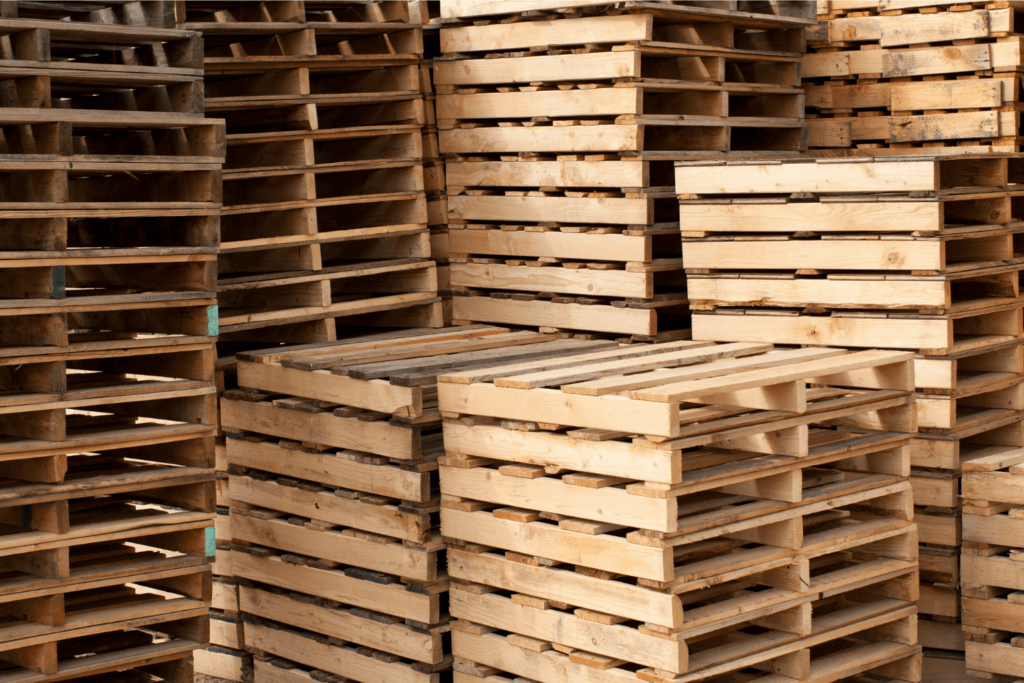There is a reason why pallets have consistent sizes and dimensions: Standard pallet sizes make the transition between different stages of the supply chain smoother.
They can fit in any transportation vehicle, so loading, unloading, and stacking of goods regardless of the location or mode of transport are efficient.
Pallets can also be stacked uniformly, so storage space in warehouses and containers is maximized.
If you want to streamline your processes, reduce your costs, and improve your overall supply chain performance, knowing the standard pallet sizes is extremely important.
This article will help you gain that knowledge.
What Is the International Standard Pallet Size and Dimension?
The most common international standard pallet size is typically around 47.24” x 39.37”.
But ISO also recognizes other standard pallet dimensions such as 43.30” x 43.30” and 45.87” x 45.87”, which cater to specific regional preferences and logistical requirements.
Businesses across different industries, from food and beverage to manufacturing and retail, can rely on these pallets for consistency in their supply chains.
They are widely accepted across many countries and regions, so companies can ship goods globally without running into size compatibility issues.
What Are the Standard Pallet Sizes and Dimensions Around the World?
The universally accepted pallet size ensures goods are safely and efficiently transported across borders and continents.
However, certain countries have their own specific pallet sizes that they use at a national level.
These standard pallet sizes are carefully chosen to align with regional logistics practices, industrial requirements, and infrastructure capabilities.
Let us take a look at the standard pallet sizes and dimensions around the world.

United States and Canada
In the United States and Canada, the standard pallet size is known as the GMA pallet, measuring 48” x 40”.
This size is very common in industries such as retail, grocery, and manufacturing due to its compatibility with American trucks, shipping containers, and warehouse systems.
South America
South America, particularly Brazil, utilizes pallets sized at 39.37” x 47.24”.
These pallets are similar in size to the EUR2 standard used in Europe but are tailored to fit the region’s specific logistical and industrial needs.
They are well-suited for various industries, including agriculture, automotive, and retail.
Europe
In Europe, the standard pallet size that is widely used and recognized is known as the Euro pallet, specifically the EUR1 size.
The dimensions of a Euro pallet are 47.24” x 31.50”.
These pallets are standardized by the European Pallet Association (EPAL) and are prevalent throughout Europe, including countries within the European Union and beyond.
Additionally, Europe also uses other standardized pallet sizes such as EUR2 (47.24” x 39.37”), EUR3 (39.37” x 47.24”), and EUR6 (31.50” x 23.62”).
These sizes provide flexibility while maintaining compatibility with European and international logistics standards.
United Kingdom
In the United Kingdom, the standard pallet size commonly used aligns with the EUR2 standard pallet dimensions, which are 47.24” x 39.37”.
The EUR2 pallet size is chosen for its versatility and efficiency in handling and transporting goods within the UK’s logistical infrastructure.
It fits well into standard UK warehouse configurations and transportation vehicles, including trucks and shipping containers.

Asia
In countries like Japan, South Korea, and parts of Southeast Asia, the standard pallet size is 43.30” x 43.30”.
In China, however, the standard pallet size is 47.24” x 39.37.
Some countries in Asia may use customized pallet sizes tailored to their specific industrial and logistical needs.
These sizes can vary based on factors such as local manufacturing practices, warehouse dimensions, and transportation infrastructure.
Australia
In Australia, the standard pallet size is 45.87” x 45.87”.
This size is specifically designed to fit efficiently into RACE (Railways of Australia Container Express) containers used for domestic and international transport.
The Australian pallet’s dimensions are suitable for mining, agriculture, and retail industries.
Conclusion
A consistent pallet size simplifies the entire supply chain process.
Manufacturers can streamline production and packaging processes by designing products to fit standardized pallet dimensions.
Distributors and retailers can receive shipments more efficiently, knowing that pallets will conform to their storage and handling systems.
This uniformity reduces errors, delays, and administrative complexities throughout the supply chain.
Chesapeake Pallets has been helping companies across the United States level up their logistics, one pallet at a time.
For inquiries, email us at info@chesapeakepallets.com or request a quote below!
















